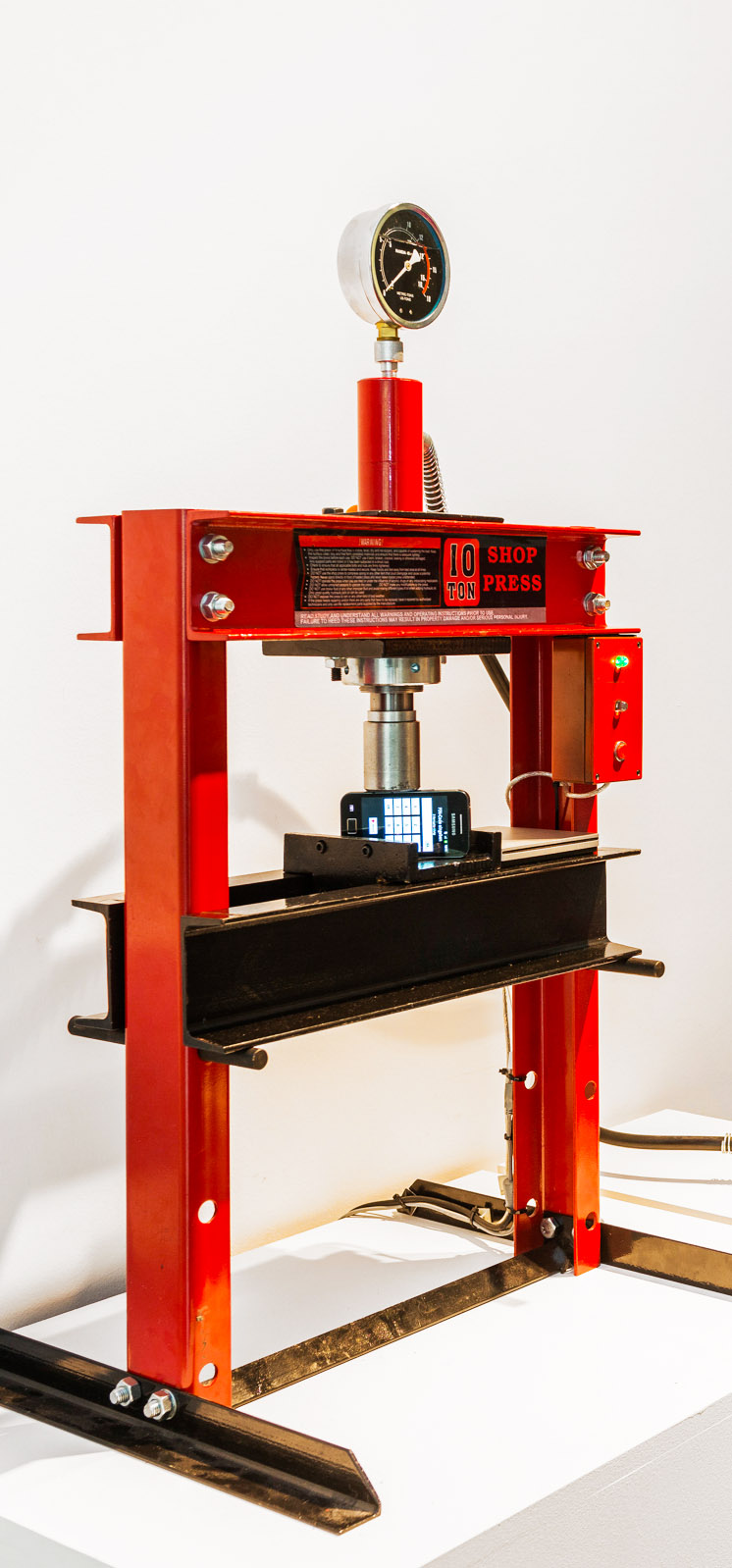
VTOL
Pétrole
L’idée principale de ce projet est de présenter aux visiteurs de l’exposition la possibilité de détruire tout objet qui pourrait se trouver sur leur personne, afin de le transformer en une composition sonore unique. L’installation se compose de cinq presses hydrauliques, capables d’écraser pratiquement n’importe quel objet (téléphone portable, paire de lunettes, écouteurs ou autre). En cours de destruction, un microphone spécial enregistre les sons émis lors de la déformation de l’objet et, en quelques minutes seulement, un algorithme informatique les transforme en un album de 20 minutes.


